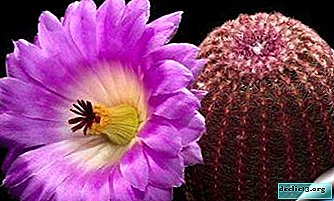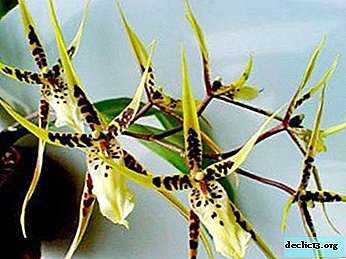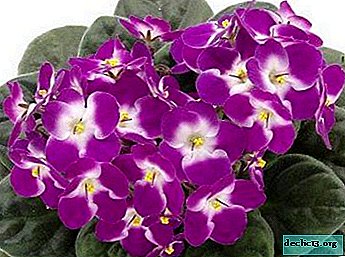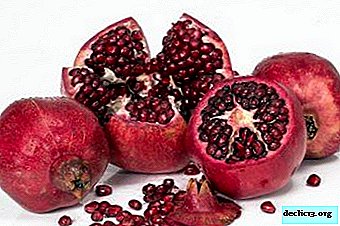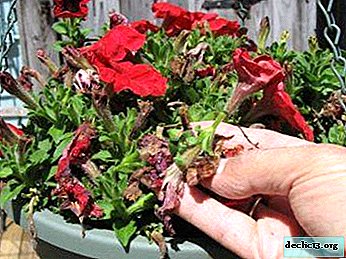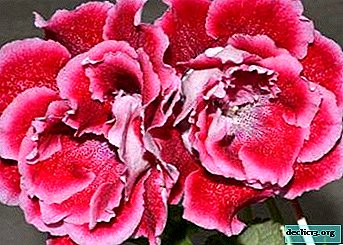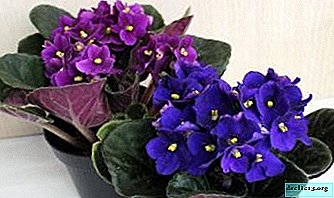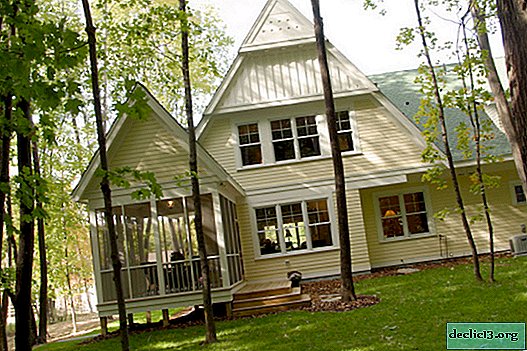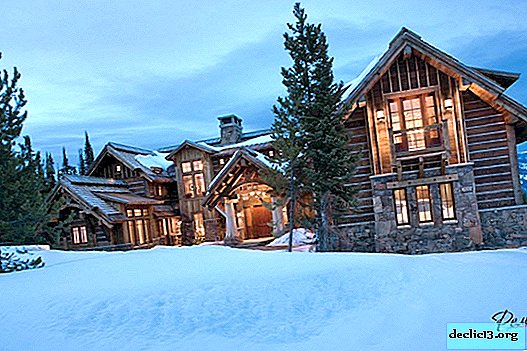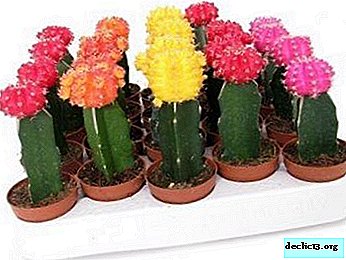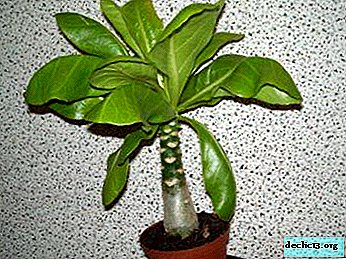A dangerous relationship for planting is a symbiosis of ants and aphids. How to protect plants?
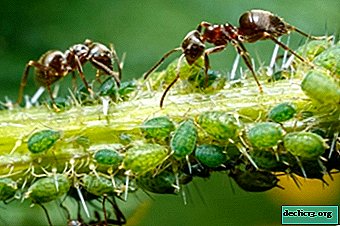
Often on young and juicy shoots hordes of aphids appear and destroy the stems. Soon after, the plants will be occupied by ants.
These insects enter into a mutually beneficial alliance and pose a great threat to planting.
But there are still effective ways to get rid of them. This article will talk about how to deal with this type of relationship.
Aphid lifestyle
Aphids are small insects several mm in size. They live in colonies and lead a parasitic lifestyle. Aphids feed on plant sap: they pierce the stem with their tiny proboscis and suck out the plant sap. Affected leaves curl and turn yellow. Aphids can also carry viral and fungal diseases. Processing plant sap, aphids secrete honey dew, which attracts ants.
Females reproduce by laying eggs, up to two hundred pieces in one clutch. The eggs are attached to the back of the leaves with a sticky substance. One insect can lay up to two dozen of these clutches.
Aphid larvae emerging from eggs can reproduce even without fertilization, by parthenogenesis. The higher the threat of the colony, the greater the number of eggs and clutches can give one individual. Hundreds of thousands of insects can hatch per month.In the offspring, both winged and wingless individuals develop. When the colony becomes too numerous, part of the insects flies to other plants, covering a distance of up to 400 meters. Aphids can live from a week to a month. Cool temperatures up to 10 ° C extend their life up to two months.
How does an ant family live?
 Ants are "public" insects “They always live in families in the nests they built.”
Ants are "public" insects “They always live in families in the nests they built.”
Three castes stand out in the colony: the most important is the uterus or queen. It is larger than other ants and lives up to 20 years. Her only task is reproduction. Females hatch from fertilized eggs, males from unfertilized eggs, they have wings.
After the males take the necessary part in mating, they are destroyed by other inhabitants of the anthill. Male ants live a maximum of several weeks.
Most of all in the anthill of working insects (foragers) are females with an underdeveloped reproductive system. They maintain order and look after anthills, get food and raise offspring. The largest individuals among the workers perform security functions.
Also in the anthill can live slaves - ants captured in other colonies, who perform the most difficult work of serving the ant hill.
Ants feed on plant sap and seeds. Workers are constantly in search of food for the queen and the young.Mutually beneficial insect alliance
Ants and aphids create symbiosis - their relationship is beneficial for both sides. Consider whether ants eat aphids, why and how they milk it. Leaf aphids feed on plant sap and remove sugar from their bodies in the form of sweet drops - honey dew. Ants collect this dew and feed it to their queen and growing offspring.
Ants tickle aphids with their antennae, they secrete a sweet liquid. Sometimes the aphid itself waits for an ant to be nearby to give it a drop of dew. It is this process of transferring and receiving honey dew that is called "milking." Some ants even store sweet liquid in their goiter for the future.
Foragers transfer aphids from already eaten and drying plants to new and succulent ones. Aphids choose tender tops - it has a thin proboscis, so it feeds on plants with soft stems and leaves that do not wood for a long time. Currants are most affected.
Ants also "graze", protect their "herd" from ladybugs and birds threatening them. Sometimes they make fences from twigs around plants on which aphids feed, in order to protect them from ants from other colonies.
With the onset of autumn, ants take the wards to the anthill for wintering - they care about aphids and its offspring; and in the spring they deliver again to the next fresh shoots.
With an extraordinary increase in the aphid colony or in inclement weather, the ants eat part of the livestock, thus regulating the number of their “wards”.
How to fight against this type of relationship?
Important! Experts advise taking measures immediately against both pests - if you get rid only of aphids, then there is a chance that the surviving ants will bring a new colony to the plants.To get rid of aphids on the site, you can apply the following methods:

- Manually collect from plants.
- Rinse off the tops of plants with water pressure - while they climb back, the plants will have time to lignify.
- Near plants, often affected by aphids, plant garlic and onions, which scare it away with their smell.
- Seed in the area plants that attract natural pests (ladybugs, lacewing, ground beetles) - nettles and other herbs.
- Use chemicals: Akarin, Aktofit, Fitoverm, Biotlin.
- Spray bushes with soap or kerosene solution, solution on ash or onion peel.
- Fumigate the landing with smoke.
Well-established folk recipes against plant-based aphids:
- garlic solution;
- a solution of hot pepper pods, based on celandine, tops of tomatoes or potatoes.
The selected ingredient must be finely chopped, add water and let it brew.
At the same time it is necessary to fight against ants. Effective methods against them are as follows:
- pour kerosene on the anthill and ant paths;
- sprinkle anthills and the earth around them with anise leaves, tobacco ash or charcoal;
- sprinkle anthill with table salt;
- plant more wormwood and parsley on the site, since the ants do not tolerate their smell;
- spray plants affected by insects, chemicals - "Anteater", "Muratsid", "Ant".
How to protect trees?
- First of all, it is recommended to plant around the perimeter of the plant area, the smell of which these pests do not tolerate:
- onion;
- garlic;
- mint;
- marigold.
- We periodically conduct preventive treatment of trees, attract beneficial insects to the site.
- We remove exfoliated bark from fruit trees and basal shoots - in them the aphid lays eggs for the winter. Lime tree trunks and shrubs.
 To protect trees from damage to aphids and ants, the following methods of protecting trunks are often used:
To protect trees from damage to aphids and ants, the following methods of protecting trunks are often used:
- Wrap the base of the trees with corrugated cardboard or plastic film in several layers, apply turpentine along the edge of this hunting belt and tie it up with a soft rope.
- Dig a shallow hole along the perimeter of the tree, put a car tire in it and pour water.
- Grate the lower part of the trunk with garlic - the ants do not tolerate its smell, they will not spoil these trees and will not let their aphid colony go there.
- Arrange wormwood, tomato or potato tops around the trunks.
Aphids and ants harm plants individually, and if they combine in symbiosis, their union will result in catastrophic damage to the plantings. Together they destroy young shoots and harm all new landings. It is necessary to fight both pests at the same time and use the whole range of measures: from manual assembly of insects to spraying trees and shrubs with insecticides.


